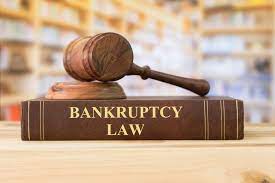Does Bankruptcy Law Include Insolvency? 5 Things To Know
Bankruptcy and insolvency are terms often used interchangeably when an individual or entity cannot pay their financial obligations.
In 2010, bankruptcy filings recorded their highest rates in the United States, reaching over one million for Chapter 7 and over 400,000 Chapter 13 cases, although these dropped as the years went on. Surprisingly, the downtrend continued even during the pandemic. In 2022, 383,810 bankruptcy cases were filed, mostly dealing with the same types mentioned.
To the uninitiated, Chapter 7 bankruptcy involves a debtor’s asset liquidation, while Chapter 13 refers to debt restructuring. Both are meant to provide a borrower with the opportunity to repay their debts.
So, how does insolvency relate to bankruptcy? And what does Bankruptcy Law have to do with the former? When do you need to contact a Bankruptcy Attorney to help you deal with your situation? Let’s find the answers in this article.
1. Bankruptcy Laws that deal with insolvency
While insolvency and bankruptcy are closely related, they’re separate concepts that apply to different situations. That’s because insolvency refers to a financial state, while bankruptcy describes a legal standing and the related proceedings of an insolvent person or business entity.
According to the US Department of Justice, the Bankruptcy Code has five principal chapters that deal with different situations:
- Chapter 7: As mentioned, this deals with liquidation proceedings applicable to businesses and individuals. Once monetized, the borrower’s assets are paid to creditors, so the former can be discharged of their financial obligations.
- Chapter 11: This legal remedy enables consumers and companies to reorganize their debts to repay a portion or their entire debt. As such, it’s better recognized as “reorganization bankruptcy.” Businesses can continue operating during the proceedings.
- Chapter 12: This law is similar to Chapter 11 but primarily covers insolvent fishermen and farmers.
- Chapter 13: Applies to financially distressed individuals who aim to restructure their obligations and repay within three to five years. To qualify, the insolvent person must have a stable income and have accumulated a financial burden of less than $2.75 million at the time of filing.
- Chapter 15: Addresses creditors and other parties of cross-country insolvency cases. This chapter often supplements an existing lawsuit filed within the jurisdiction of a borrower’s home country.
As mentioned, private individuals’ most common bankruptcy filings cover Chapter 7 and Chapter 13, while companies often file for Chapter 11 bankruptcy.
2. Insolvency is a financial state, while bankruptcy is a legal proceeding
Insolvency is an economic state where an entity’s assets and capacities aren’t enough to pay for its liabilities. There are two primary definitions of insolvency: balance sheet and cash flow insolvency.
Balance sheet insolvency occurs when the debtor’s liabilities are valued more than their assets. Cash flow insolvency happens due to a lack of financial liquidity, not assets.
Comparatively, bankruptcy is a legal relief sought by an insolvent person to make it possible to settle their debts despite financial struggles. You’ll discover more about the proceedings below.
3. Establishing insolvency is necessary for bankruptcy
Showing that you’re insolvent is necessary for establishing a bankruptcy claim. By legal definition, insolvency is the “financial condition such that the sum of such entity’s debts is greater than all of such entity’s property, at a fair valuation.” In other words, it happens when a borrower owes too much and can no longer meet their financial obligations as they become due.
Any debtor, individual, or business entity must prove insolvency, so the court accepts your petition. Besides submitting the required legal forms, filing for bankruptcy requires a financially distressed entity to present financial records outlining its income, assets, and debts. Thus, bankruptcy can’t occur without insolvency, although it’s not the only sufficient condition or indication for bankruptcy.
Note that failure to complete the legal requirements will lead to case dismissal. It’s best to work with a bankruptcy lawyer to provide you with valuable advice on how to proceed.

4. Not all insolvencies lead to bankruptcies
Bankruptcy is only of the mechanisms available to economically challenged individuals and businesses. It’s also often the last resort.
Insolvent individuals and companies may avoid bankruptcy by adopting strategies that make debt repayment for creditors possible and less burdensome. After filing a bankruptcy claim, a trustee is assigned to the case. This court-appointed staff is tasked to administer and manage the issue and will arrange a meeting between creditors and debtors as a first step for Chapter 7 cases.
In this meeting, creditors can ask questions about the petitioner’s financial situation and proposal for repayment. Depending on the latter’s circumstances, a discussion on debt consolidation, restructuring, or any other settlement plans may occur.
5. Bankruptcy protects both debtors and creditors
When a person or business faces insolvency, they can file for bankruptcy before the federal courts. Bankruptcy Courts will assess the petitioner and propose a plan for debt repayment, typically through debt reorganization and liquidation of assets.
As such, the debtor will be protected from further collection efforts while the bankruptcy claim is being heard. At the same time, creditors can wait for the court to order asset distribution or reclaim the debtor’s property, depending on the chapter involved in the case.
Bankruptcy Court judges will also decide whether the debtor should be freed from their financial obligations. However, some debts are non-dischargeable, meaning the insolvent party has to continue paying for them. These include alimony, child support, student loans, tax claims, and personal injury payments.
Concluding thoughts
If there’s anything that the global pandemic has taught us, it’s unpredictability. A person may have more money than they can spend currently, but wealth can easily disappear without warning.
Insolvency may be inevitable sometimes, but it pays to explore out-of-court remedies that can help turn your situation around. Bankruptcy shouldn’t be taken lightly, as it has lasting legal and economic implications. Before filing one, it pays to consult a bankruptcy lawyer to make an informed decision.